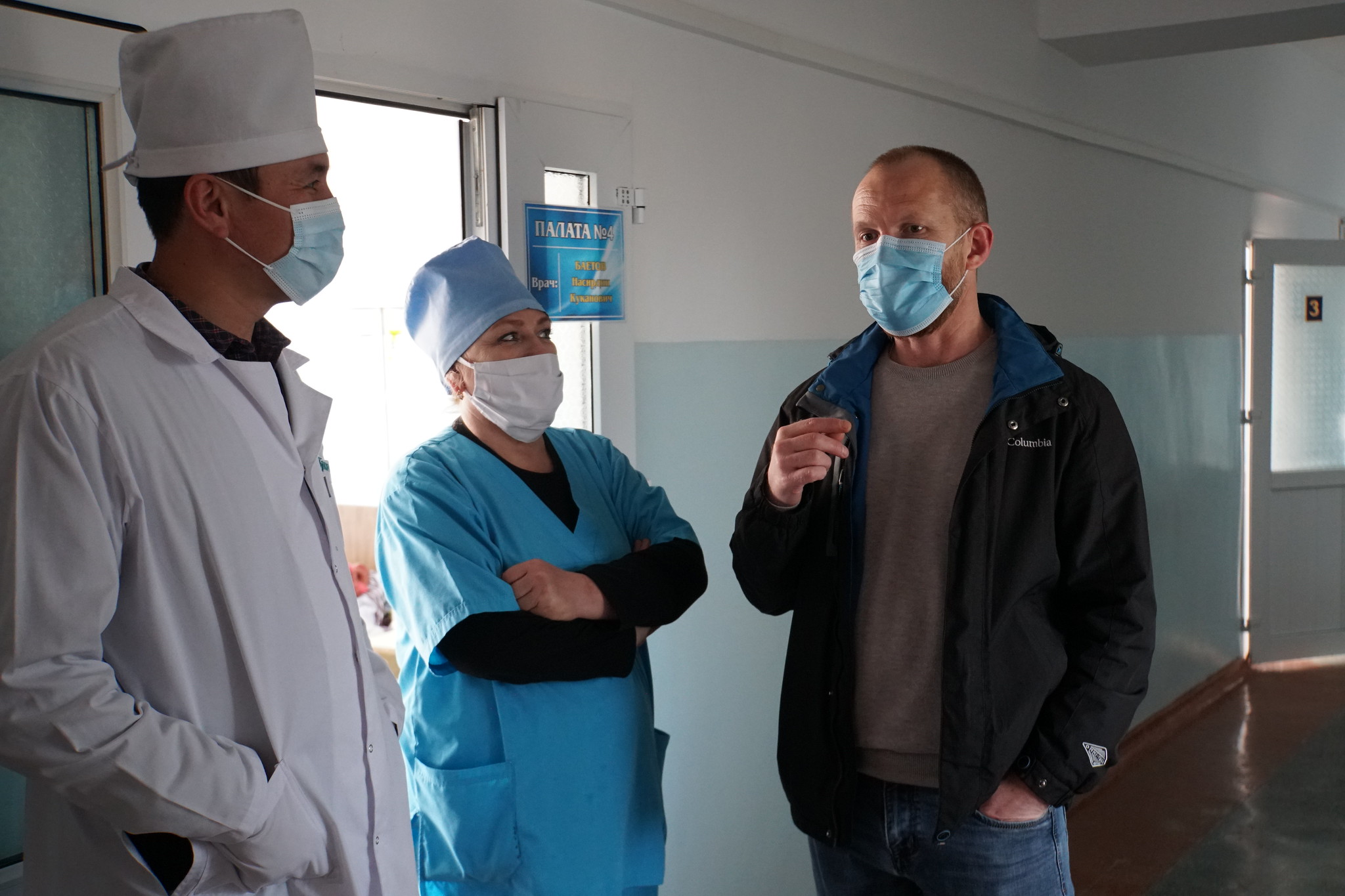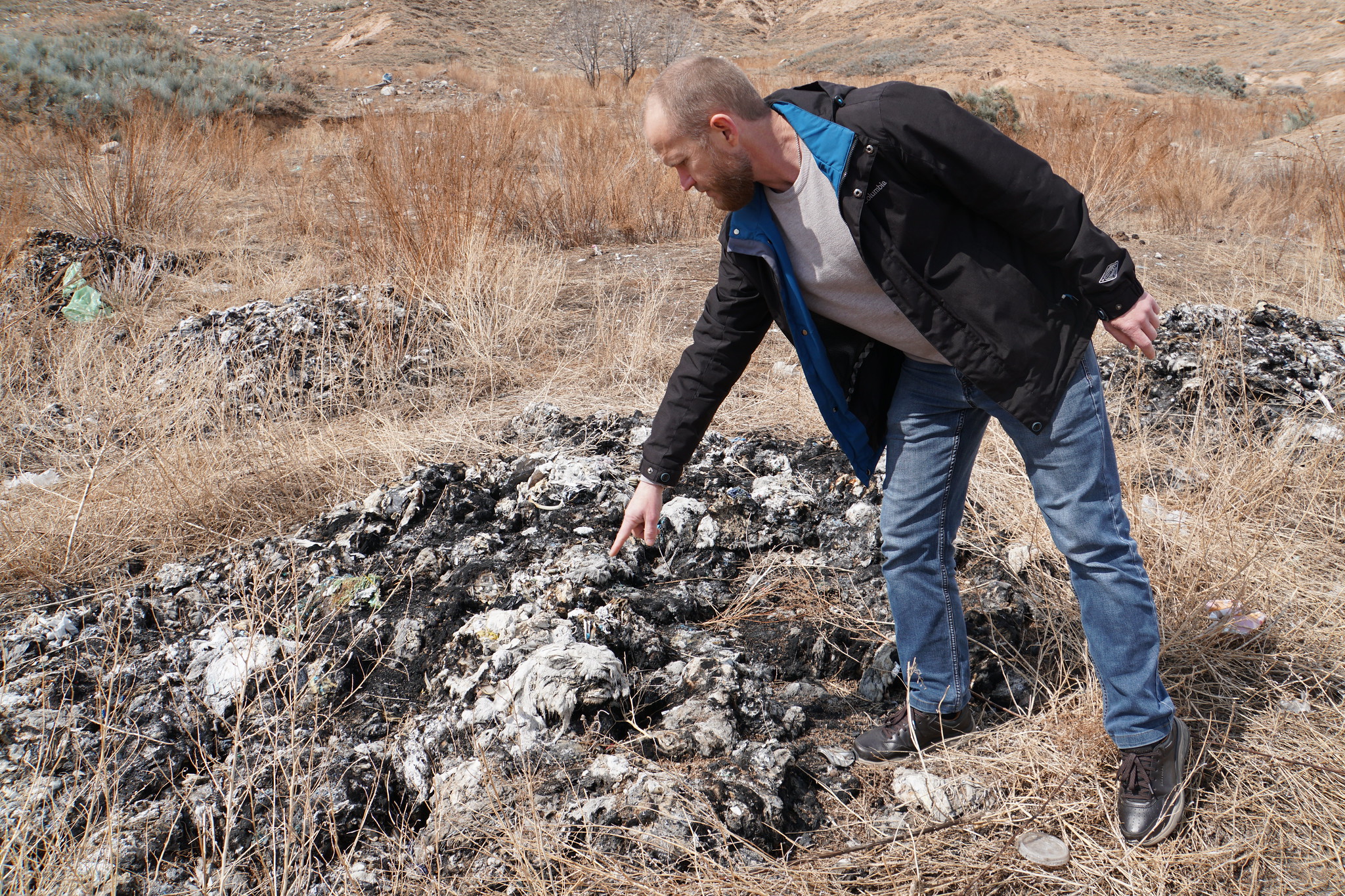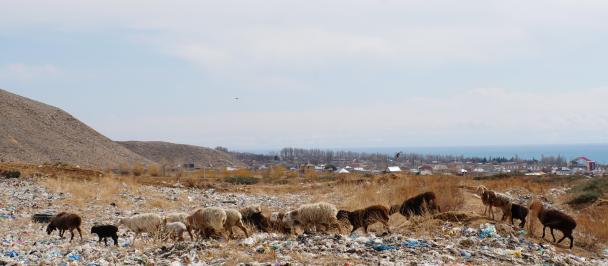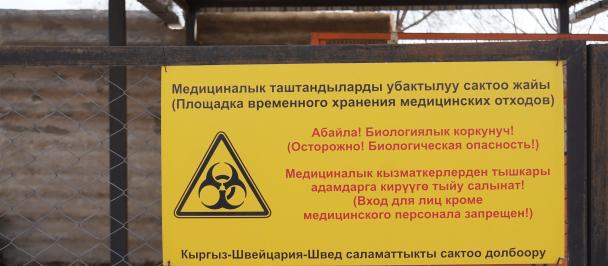Photo: Chyntemir Kalbaev / UNDP Kyrgyzstan
According to the WHO, about 15% of waste from health care activities is dangerous to humans and the environment. This danger is very diverse - it is a bacterial threat, a chemical one, radioactive one, and an ecological one. Moreover, the more actively medicine is developed, the"dirtier" the waste is. In order to reduce the risks of infecting people, spreading infections and creating epidemics, the Kyrgyz State Medical Institute for Retraining and Professional Development, together with UNDP, developed a video course on medical waste management.
Talking about the danger of medical waste began in the second half of the twentieth century. The problem arose in connection with the discovery of a number of infectious diseases, threatening humanity with epidemics. Scientists from different countries have emphasized that it is possible to become infected with HIV, hepatitis B or C during medical procedures.
More than fifty years ago, in order to prevent epidemics in medical institutions, disposable instruments and consumables were introduced into practice, disinfectants and bactericidal lamps began to be widely used. But this was not enough. The topic of medical waste neutralization is very acute today.
We talked about this with Alexei Kravtsov, a doctor-epidemiologist and candidate of medical sciences, an expert involved in solving the problem.
- Why is the danger of medical waste increasing?
- Because the industry is evolving. And patients are getting more and more aggressive procedures. You just don’t need to understand the word “aggressive” here in a domestic context. With the development of science, doctors have more opportunities to carry out diagnostics and treatment, and as a result, instruments and consumables are more likely to come into contact with human blood and other fluids. Disposable medical devices (syringes, masks, gloves, personal protective equipment) are increasingly used. Pharmacology and radiology are developing rapidly, which means what? This means that the amount of plastic, chemical and radiological waste is increasing. A disposable tool is also a huge amount of waste. Unfortunately, progress always has two sides
- How to deal with this?
- There is the so-called Brazilian Convention, which determines what to do with this issue. Since 2003, we in Kyrgyzstan have started to work with this within the framework of the state program for the prevention of nosocomial infections. First, we investigated the situation and figured out what stage we are at. We saw the danger for medical workers, environmental risks, epidemic risks.
You see, hospital technicians took out chlorine-disinfected medical waste to landfills, which was not even sorted properly. And there was also such that waste was burned right in the courtyard of hospitals. And this directly violated several legislative norms, among other things. It was possible with complete confidence to call this situation terrible.
- What did they start from?
- Practically from scratch. Namely, the waste was segregated and classified. Class A non-hazardous waste - packaging from disposable syringes, dressings, boxes and other garbage that is not toxic, bacterial or otherwise hazardous, can still be taken to the landfill. And hazardous waste is now divided into 5 classes, and among them are anatomical, contaminated with biological fluids and epidemiological hazardous instruments, unused vaccines, radiological waste, unused drugs that have a potential toxicological hazard, and so on. Each class has its own disposal protocol. For example, disinfection with toxic chlorine, due to which nurses and nurses fell ill with asthma en masse, were replaced with autoclaves. And not just like that, but after research, finding out whether bacteriological and other hazards are eliminated after the operation of the unit. Moreover, we chose the simplest version of the autoclave, because it does not require special qualifications of personnel and does not break down for long. And not so much depends on the stable voltage of the electric current in the network, we all know what drops occur, especially at the periphery. That is, we proceeded from a simple rule - what we choose should work in real conditions. And disinfected plastic instruments - syringes, for example - are now sent for recycling. That is, recycling should be not only efficient, but also environmentally friendly. Hospitals can also make money on this and they will not be hindered by income, this is obvious.
- Has the problem been solved now?
- No, there is still a lot of work. The situation with chemical wastes is very difficult, the most effective way to neutralize them is hydrolysis, but so far, in practice, many things are not as we would like. And if we talk about mercury-containing waste, then we still do not meet the requirements of the Minomato convention, which is ratified.
We are currently developing such a technology for the utilization of chemical waste as pyrolysis. This is not combustion, but rapid decomposition into a number of non-toxic elements, the process takes place without oxygen. We will be developing and implementing many more waste disposal technologies.
All medical waste must be disposed of responsibly, even if it is not considered particularly hazardous. In order to reduce the risks of human infection, the spread of infections and the emergence of epidemics, it is important to properly sort and dispose of medical waste. Medical personnel are advised to use a specially designed video course, which details the categories of medical waste and how they are disposed of.
You can watch the course on medical waste disposal on the UNDP Youtube channel at https://www.youtube.com/user/UNDPKG. Note that it was developed by the Kyrgyz State Medical Institute for Retraining and Advanced Training in conjunction with the United Nations Development Program in the Kyrgyz Republic with the financial support of the Government of Japan.
Photo: Chyntemir Kalbaev / UNDP Kyrgyzstan
Photo: Chyntemir Kalbaev / UNDP Kyrgyzstan

 Locations
Locations



